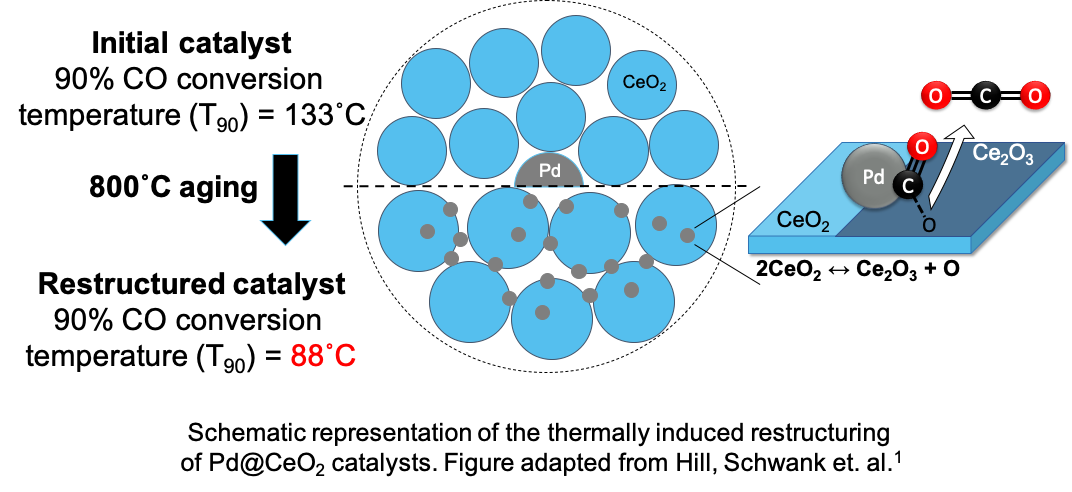2020 Virtual AIChE Annual Meeting
(317e) Thermally Induced Restructuring of Core@Shell Nanoparticles As a Strategy for Increasing Catalyst Stability and Activity
Authors
In this work, we investigate how initial catalyst nanostructure affects the outcomes of high temperature restructuring.1 By comparing core@shell nanoparticles that have active metal cores encapsulated by porous metal oxide shells, with catalysts prepared by wet impregnation, we show divergent restructuring outcomes that depend on the placement of the active metal.
Elevated temperature aging (800ËC) of a Pd@CeO2 core@shell catalyst redisperses core Pd species throughout the encapsulating CeO2, increasing active site dispersion from 33% to 88%. The highly dispersed restructured Pd clusters exhibit an average diameter of 1.3 nm, and coordinate strongly with the reducible CeO2 support, as characterized by CO chemisorption, transmission electron microscopy, and x-ray energy dispersive and photoelectron spectroscopies. The Pd redispersion also appears to stabilize the CeO2 crystallites that comprise the shell, making them less prone to high temperature sintering. These restructuring processes appreciably increase catalytic activity, as indicated by a 45ËC decrease in the temperature required for 90% conversion in a probe CO oxidation reaction. The turnover frequency for CO oxidation increases from 0.2 s-1 to 0.39 s-1 and the apparent activation energy decreases from 42 to 33 kJ/mol after aging. Such changes in intrinsic catalytic activity suggest that the enhanced activity seen in the restructured catalysts is not solely due to an increase in active site dispersion. Such outcomes are in stark contrast to those observed for Pd/CeO2 catalysts prepared by impregnation, which exhibit appreciable pore closure, sintering and impeded activity after identical elevated temperature aging. By extending this investigation to a number of aging conditions and active metal/ support combinations, we hope to better understand how directed restructuring of carefully designed nanomaterials can be used as a novel strategy to enhance catalyst functionality.
[1] Hill, Schwank, et. al. ACS Catal. (2020). 10.1021/acscatal.9b05224.
